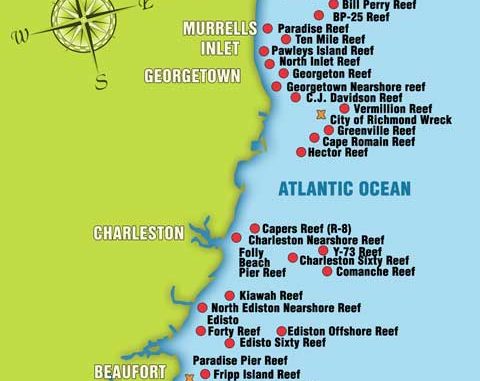
Winter is prime time for ocean bottom-bumping.
Making his way through the Winyah Bay jetties from Georgetown, Will Herbert couldn’t help but shiver. After all, it was December, and it was downright cold on the ocean before sunrise.
He steered his 26-foot Sailfish east on a course that would eventually lead to the “Parking Lot,” a popular fishing spot — but with a stopover to load up on baitfish.
With mid-day temperatures forecast for the lower 60s, he hoped to have a tank full of bait and be able to shed some of the layers of clothing by the time he anchored up over a livebottom ledge.
“I’d much rather bottom-fish out here in the winter than during the summer,” said Herbert, an active member of his hometown Florence Blue Water Fishing Club. “During the summer, we’ll have to go twice as far out to catch grouper and snapper and the bigger black sea bass. This time of year, they’ll move in from 160 feet deep, and you can find them in 60 to 80 feet. Not to mention it’ll be 100 degrees and humid during August. In December, we often get T-shirt and jeans weather on calm days.”
While Herbert typically catches a variety that ranges from grouper to snapper and even sheepshead, he admits the mainstay of most of his and other winter-time bottom-fishing trips are black sea bass.
Catching sea bass is not hard — quite the contrary. Herbert said they’ll stack up so tight, it’s often hard to catch anything but the tasty, big-mouthed fish. The key to catching them, he said, is finding them.
“During December, I know I’m going to fish 27 miles outside of the mouth of the Winyah (Bay) jetties,” Herbert said. “A lot of people bottom-fish around the artificial reefs that the state has planted over the years, and they catch a lot of fish off these, but for me, I’m looking for livebottom spots that are located along the 2CR Ledge.”
He suggested that the bottom topography off South Carolina’s coast is not flat or even a gentle slope like some folks tend to believe. He said the bottom is a system of drop-offs from one level to another, stair-stepping its way out to the Continental Shelf, which lies approximately 55 miles offshore of Georgetown.
The 2CR Ledge is one of these stair-steps that isn’t readily labeled on most maps. The 2CR is one of the main ledges that runs northeast offshore of McClellanville up toward Murrells Inlet. Herbert admits the entire ledge system is not as productive as certain spots he has discovered along the way.
“You’ve got to get out there and search the bottom and find your own spots,” he said.
“Some of the ledges will have more bottom relief than others, and that’s what attracts fish. Anytime you have a drop from one side to the other that goes six, eight or even 10 feet, it’s probably going to have some good fish on it.”
And the bigger the dropoff, the more likely it is to hold fish. Two feet of relief may hold a few, but 10 feet of vertical relief is sure to be pock-marked with holes, crevices and rock outcroppings — a lot more fish-holding potential.
While water depth plays a major role in whether he’ll find grouper or black sea bass hanging out on a ledge, catching those fish is more dependent on the bait he’s using.
“The limit on black sea bass is 15 per person, with a minimum length of 12 inches,” Herbert said. “We’ll catch them two at a time from the time we get anchored up, so having a limit of bass goes pretty quick.
“Any kind of cut bait like frozen squid or mullet will catch black sea bass. We catch those big, blue-headed black bass out here during the winter, and once we have a limit, we’ll switch baits and start trying to catch some of the bigger bottomfish like snapper or grouper.”
Herbert likes bigger baits — bigger than what a black sea bass can handle — when he’s after snapper or grouper. Occasionally, they may catch vermillion snapper — many fishermen call them “beeliners” — when fishing for bass. Many novices mistakenly call these red snapper because of their reddish color, but an average 2½-pound vermillion snapper pales in comparison to an American red, which may grow to over 30 pounds. Both grouper and red snapper can be caught on large chunks of cut baits, but a hands-down favorite is a whole live vermillion snapper.
“On a typical day, we spend a lot of time searching for spots that hold snapper and grouper after we’ve got our bass,” said Herbert. “I catch a good many snapper and grouper in the 20- to 25-mile range offshore. Some times they’ll be mixed in there with the black sea bass, and we’ll catch them with the bigger baits, but most of the time, the bass are stacked up so thick, we have to go look in other places.”
Once in a while, Herbert will stop by one of the artificial reefs closer to shore and try his hand with the local sheepshead population. The bite cranks up in December when the striped bandits leave their inshore haunts around piers and pilings and congegate around offshore wrecks. It will last through the winter and early spring, until the fish move back inland. Herbert said they’ll often stop just outside Winyah Bay at the GSA reef, also known as Three Mile Reef, if they can stock up on fiddler crabs before making the trip.
“Sheepshead require smaller hooks and smaller tackle than what we’re using on the ledges,” he said. “I prefer smaller hooks than the 5/0 live-bait hooks preferred by most of my buddies, even offshore, but for sheepshead, we’ll drop down even smaller than that.”
Ranging closer to home has also been productive farther south down the Carolina coast for John Ward of Affinity Charters, who runs many of his charters from Kiawah Island Resort.
“Most of the spots we’re fishing this month are the man-made wrecks and reefs closer to shore around Kiawah and Edisto,” Ward said. “Those are the Edisto Nearshore, the Low Country Angler’s, and 4KI, also known as Kiawah Reef.”
Ward said his nearshore bottom-fishing runs typically produce loads of black sea bass and sheepshead as well as a mixture of weakfish, sharks, triggerfish and a occasional red snapper.
“These bottom-fishing runs are a great way to keep everybody occupied with high numbers of fish and a lot of table fare that my clients can take home and eat,” said Ward. “It’s pretty easy fishing — only requiring a low skill level to catch a lot of fish.”

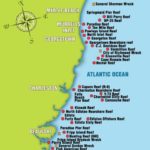
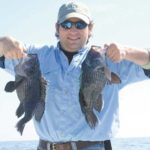
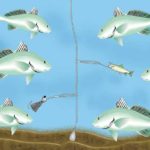
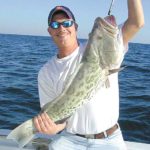
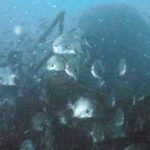
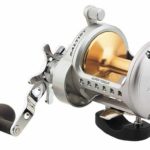
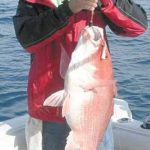



Be the first to comment